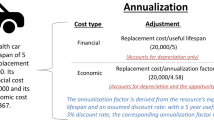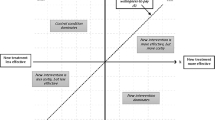Abstract
In this paper we consider the evolving American healthcare landscape and what it means for the use of economic evaluation of health interventions. We emphasise that use of economic evaluation in the US is unlikely to follow the European, Canadian or Australian models, which use cost effectiveness openly and explicitly, given the decentralised manner in which American healthcare is organised, financed and delivered, as well as different political systems and traditions, and cultural expectations and attitudes surrounding healthcare. However, this does not mean that considerations of value are absent. On the contrary, measurement of value remains near the top of the agenda among US policy makers. With a few exceptions, it just isn’t playing out explicitly. In the American context, it means in part heightened debate over clinical evidence, and cost sharing. In some cases, payers are also considering economic evaluation more directly in coverage and reimbursement decisions and indirectly for clinical practice guidelines and best practice recommendations. A dramatic shift in policy towards cost effectiveness seems unlikely in the near future. Change will likely come in incremental fashion through experimentation, and perhaps in selected circumstances with public and private leaders willing to take the political risks. Conceivably, more substantial change will occur with a major shift in the political leadership in Washington, DC in the legislative or executive branches, and/or with an economic downturn and severe pressures on federal and state health budgets. However, a more likely outcome is the ongoing indirect use of cost-effectiveness information.
Similar content being viewed by others
Notes
The use of trade names is for product identification purposes only and does not imply endorsement.
References
Lawrence L. Biotech drug market steadily expands. Nat Biotechnol 2005; 23 (12): 1466
Nagle PC, Lugo TF, Nicita CA. Defining and characterizing the late-stage biopharmaceutical pipeline. Am J Manag Care 2003; 9 Suppl. II: S124–S135
Neumann PJ, Divi N, Beinfeld MT, et al. Medicare’s national coverage decisions, 1999–2003: quality of evidence and review times. Health Aff 2005; 24: 243–254
Neumann PJ. Evidence-based and value-based formulary guidelines. Health Aff 2004; 23 (1): 124–134
Neumann PJ, Rosen AB, Weinstein MC. Medicare and cost-effectiveness analysis. N Engl J Med 2005; 353: 1516–1522
Tunis SR. Economic analysis in health care decisions. Am J Manag Care 2004; 10 (5): 301–304
Gillick MR. Medicare coverage for technology innovations-time for new criteria? N Engl J Med 2004; 350 (21): 2199–2203
Foote SB. Why Medicare cannot promulgate a national coverage rule: a case of regula mortis. J Health Polit Policy Law 2002; 27 (5): 707–730
Garber AM. Cost-effectiveness and evidence evaluation as criteria for coverage policy. Health Aff 2004; w4: 284–296
Medicare Payment Assessment Commission (MedPAC). Report to Congress. Washington, DC: MedPAC, 2006 Jun
Mohr P. Use of cost-effectiveness analysis in the US Medicare program. Presentation at Harvard School of Public Health; 2006 Apr 12; Boston (MA)
National Emphysema Treatment Trial Research Group. Cost-effectiveness of lung-volume reduction surgery for patients with severe emphysema. N Engl J Med 2003; 348 (21): 2092–2102
Padrez R, Carino T, Blum J, et al. The use of Oregon’s evidence-based reviews for Medicaid pharmacy policies: experiences in four states. Washington, DC: Kaiser Commission on Medicaid and the Uninsured, 2005
Neumann PJ. Emerging lessons from the Drug Effectiveness Review Project. Health Aff 2006; 25: w262–w271
Fox DM. Evidence of evidence-based health policy: the politics of systematic reviews in coverage decisions. Health Aff 2005; 24: 114–122
Consumer Reports. Best buy drugs: drug effectiveness review project, December 2004 [online]. Available from URL: http://www.crbestbuydrugs.org/partners_DrugEffectvns.html [Accessed 2005 Aug 31]
Watkins J, Choudhury SR, Wong E, et al. Managing biotechnology in a network model health plan: a US private payer perspective. Health Aff 2006; 25 (5): 1347–1352
AMCP format for formulary submissions. Version 2.1 Alexandria (VA): Academy of Managed Care Pharmacy, 2006
Acknowledgements
No sources of funding were used to assist in the preparation of this article. The authors have no conflicts of interest that are directly relevant to the content of this article.
Author information
Authors and Affiliations
Corresponding author
Rights and permissions
About this article
Cite this article
Neumann, P.J., Sullivan, S.D. Economic Evaluation in the US. Pharmacoeconomics 24, 1163–1168 (2006). https://doi.org/10.2165/00019053-200624110-00012
Published:
Issue Date:
DOI: https://doi.org/10.2165/00019053-200624110-00012




